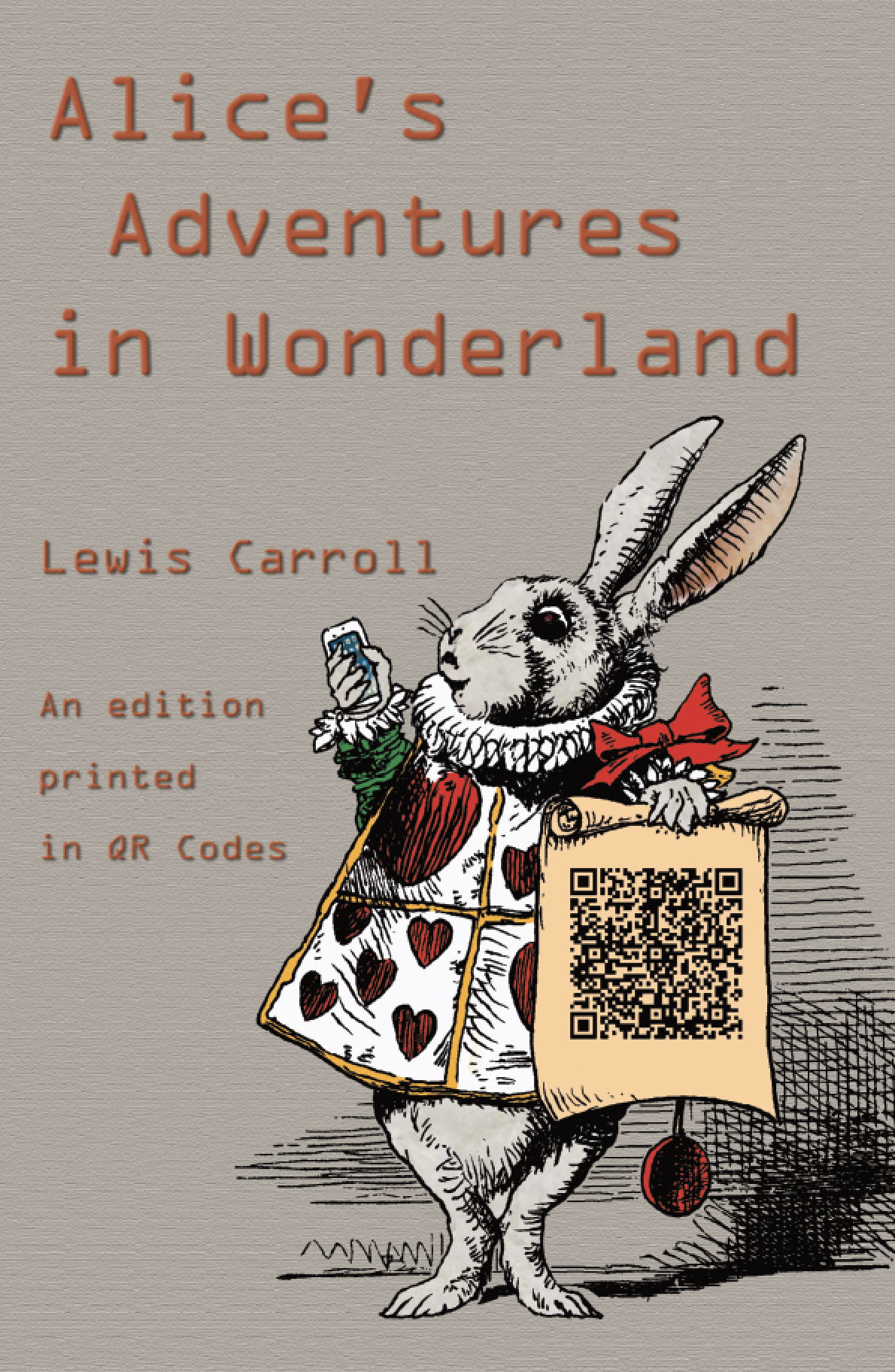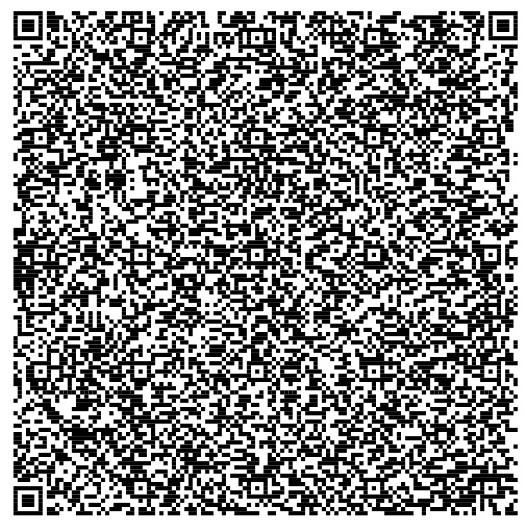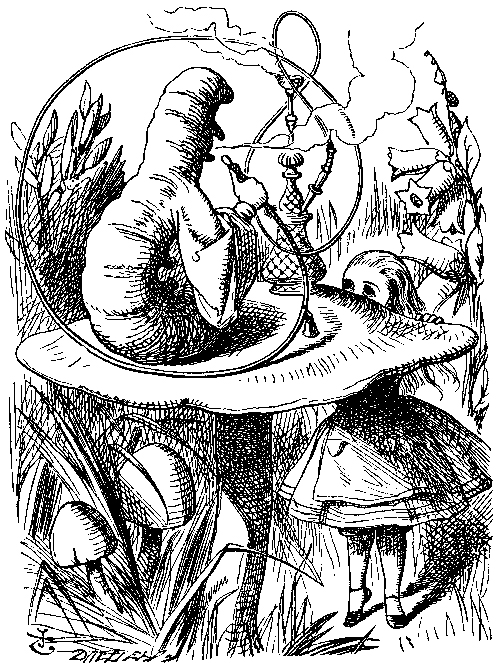Alice's Adventures in Wonderland:
An edition printed in QR Codes

By Lewis Carroll
Foreword by Michael Everson.
First edition, 2018. Illustrations by John Tenniel. Dundee: Evertype. ISBN 978-1-78201-222-1 (paperback), price: €13.95, £11.95, $15.95. Click on the book cover on the right to order this book from Amazon.co.uk!
Or if you are in North America, order the book from Amazon.com!
|
The term "QR Code" is an abbreviation for “Quick Response Code”, and is the registered trademark of Denso Wave Inc. for one of the many varieties of two-dimensional barcodes, otherwise known as matrix barcodes. It was designed in 1994 for the Japanese automotive industry. Its purpose was to track vehicles during manufacturing; it was designed to allow high-speed component scanning. QR Codes can represent a variety of data types, but was devised for encoding numeric, alphanumeric, byte/binary, and kanji data. QR Codes are used for product tracking, item identification, time tracking, document management, and general marketing. A QR Code consists of black squares arranged in a square grid on a white background, which can be read by an imaging device such as a camera, and processed using Reed–Solomon error correction until the image can be appropriately interpreted. Under good lighting with a clear image, interpretation can happen very quickly indeed. The encoded data is extracted from patterns found in both horizontal and vertical components of the image. QR Codes are used around the world to enable people to get to websites quickly. They are also used for advertisements. In this book the text of Alice's Adventures in Wonderland has been represented in QR Codes. This is not the first time QR Codes have been used for Alice. A project called Books2Barcodes originated by Mike Lacher published online a number of books encoded with QR Codes. That project presented Alice divided into 186 QR Codes. Each of these encoded about 780 characters, except for the last one which contained 301. In the Books2Barcodes edition, which was released in 2011, the resolved text shows linebreaks within paragraphs, and writes italicized words in ALL CAPITALS. The present book divides Alice somewhat differently. Here, section breaks occur exclusively at paragraph endings, and the placement of John Tenniel’s illustrations has also been taken into account. The 143,587 characters (including spaces) which occur in the book have been divided into 114 QR Codes which have an average character count of 1281; the longest QR Code contains 1683 characters (p. 77), and the shortest contains 336 characters (p. 58). In this edition, runs of italic text are preceded and followed by an underscore _thus_. Each paragraph is separated from the next by a full linespace, and tabs are used to indent lines of poetry where warranted. In keeping with the electronically-parseable format of the text in this book, The OCR-A font has been used for un-encoded text, as in the page headers and footers, and the OCR-B font for the chapter titles and this Foreword. The tag on the Hatter’s hat has been rendered in QR Code on pp. 84, 88, and 140, though the second one is incomplete and cannot be parsed. Since QR Code is square in shape, it could not be used for the “DRINK ME” tag on p. 15. For this Braille “⠙⠗⠊⠝⠅⠀⠍⠑” has been used, as it is another matrix-based writing system. On p. 97 there are three opportunities for QR codes, since playing card suits are text characters in Unicode. The illustration has been left unchanged, but you can see the codes for the suits here:
|
||||

|
“That is not said right,” said the Caterpillar. | |||
| “Not quite right, I’m afraid,” said Alice, timidly: “some of the words have got altered.” | ||||
| “It is wrong from beginning to end,” said the Caterpillar, decidedly; and there was silence for some minutes. | ||||
| The Caterpillar was the first to speak. | ||||
| “What size do you want to be?” it asked. | ||||
| “Oh, I’m not particular as to size,” Alice hastily replied; “only one doesn’t like changing so often, you know.” | ||||
| “I don’t know,” said the Caterpillar. | ||||
| Alice said nothing: she had never been so much contradicted in all her life before, and she felt that she was losing her temper. | ||||
| “Are you content now?” said the Caterpillar. | ||||
| “Well, I should like to be a little larger, Sir, if you wouldn’t mind,” said Alice: “three inches is such a wretched height to be.” | ||||
| “It is a very good height indeed!” said the Caterpillar angrily, rearing itself upright as it spoke (it was exactly three inches high). | ||||
| “But I’m not used to it!” pleaded poor Alice in a piteous tone. And she thought to herself “I wish the creatures wouldn’t be so easily offended!” | ||||
| “You’ll get used to it in time,” said the Caterpillar; and it put the hookah into its mouth and began smoking again. | ||||

|
||||
